Keeping you informed
Newsletter July 2022
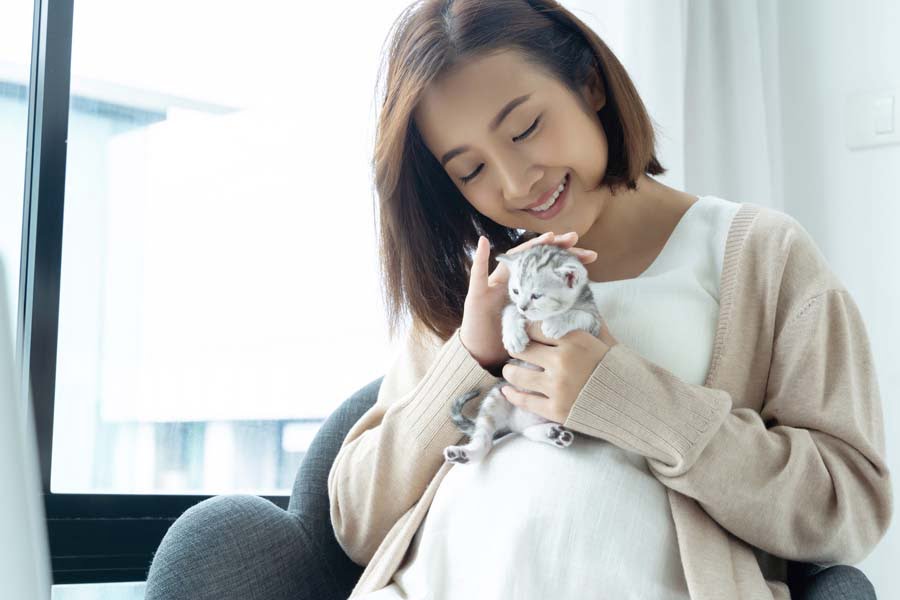
Introducing Karyn Gresser: Client Services Manager

During the month of July we were thrilled to introduce Karyn Gresser to our Customer Care Team as our Client Services Manager. With a background in veterinary nursing, experience in veterinary emergency reception, and having also managed a prominent boarding kennel in the past, she is a knowledgeable and valuable addition to our team. You may find her with her three talented Koolies, Banjo, Gypsy, and Digger, competing in obedience and agility competitions around St. Ives and Castle Hill.
Do you know about toxoplasmosis? Dr Gretta’s article explains the risks to humans, particularly pregnant women, and how to avoid getting infected, in her article, ‘Toxoplasmosis: Can I Keep My Cat While I’m Pregnant?’.
Our Pet Behaviour Consultant, Katie Bedrossian’s article focuses on ‘Toilet Training your New Puppy in 5 Simple Steps’ (even when it is raining!).
We had some great questions come through for our Ask the Vet section, so if there is a question you really want to know the answer to about your pet, email it through to info@turramurravet.com.au to be included in our next edition.
The easiest way to book a veterinary consultation is to Book Online via our website at www.turramurravet.com.au. If you wish to book with a specific vet, please phone us on (02) 9988-0198. Our vets are also happy to conduct a telehealth consultation where suitable, to allow extra flexibility for clients, particularly if you are isolating at home.
Can I Keep My Cat While I’m Pregnant?
Author: Dr. Gretta Howard – Senior Veterinarian
When you decide it’s time to start a family, or when you have had the exciting news of a pregnancy, thoughts turn to the arrival of a healthy baby. If you’re a cat owner, perhaps you may have heard of toxoplasmosis and its potential to have serious consequences for your baby. Firstly, rest assured that you don’t have to get rid of your cat – you can safely manage the risks.
What is toxoplasmosis?
Toxoplasmosis is an infectious disease caused by a protozoal parasite known as Toxoplasma gondii and can affect many animals, including humans, mammals (including farm animals and cats), rodents and birds. It is prevalent world-wide.
How are cats involved in the life-cycle of toxoplasmosis?
Cats are the definitive host for Toxoplasma gondii and can acquire toxoplasmosis by hunting and eating infected animals, such as rodents and birds (intermediate hosts), or less commonly through ingestion of infected cat faeces. Oocysts excreted in cat faeces sporulate and the sporulated oocysts become infective approximately 24-48 hours later. This means that the cat itself is not a source of oocysts, only its faeces are.
Generally, cats only excrete the oocysts for 2 weeks after their initial infection. If the conditions are right (moist soil or water) these can remain viable in the environment for over 12 months! Cats are the only host that can support the entire life cycle of the parasite. This is known as the enteroepithelial life cycle. What are the clinical signs of toxoplasmosis in an infected cat? Not all cats develop clinical disease and can be asymptomatic even while shedding infective oocysts in the faeces (particularly adult cats with well-developed immune systems). Clinical disease caused by toxoplasmosis can be systemic or focal and reflect specific organ involvement.
Clinical signs of feline toxoplasmosis include:
- Diarrhoea
- Fever
- Lethargy
- Not eating
- Difficulty breathing (lung disease)
- Jaundice (liver disease)
- Neurological signs (CNS disease)
- Blindness or ocular lesions (eye disease)
Click on the link to learn more about toxoplasmosis.
Toilet Training your Puppy in 5 Simple Steps (even when it is raining!)
Author: Katie Bedrossian – Pet Behaviour Consultant

Alongside managing puppy mouthing, chewing and socialisation, toilet training is a key part of raising any puppy who will spend time indoors. However, without a few guidelines, it can cause frustration, mess and sometimes relegation to being kept outdoors, reducing social interaction.
Read below for the top 5 ways to ensure puppy toilet training goes as smoothly as possible:
- Be aware of normal puppy development. Your puppy’s bladder and bowel control is not the same as a dog over 6 months of age. Puppies less than 16 weeks old have limited ability to hold on, limited awareness of when they are full and at this age, they get distracted easily. However, most have a natural desire to keep their bed clean. Puppies aged between 16 weeks and 6 months have better control, but can regress and often need guidance during changes (such as during rainfall and visitors). Despite this lack of control, training is important to ensure that good habits stick.
- Prevent accidents happening in the first place. As puppies naturally like to keep their bed clean (and often a small area surrounding this) and don’t like toileting on lead, we can use this to ensure toileting accidents are less likely to occur inside. By tethering your puppy (with a chew-proof tether) to a table or chair leg with their bed, 3-4 toys and a chew item, your puppy can’t wander off to have an accident and is also kept close to you so that you can monitor your puppy’s behaviour closely. You can use playpens and crates in the same way, however some puppies feel more comfortable being tethered than in one of these. An added benefit is that your puppy will think that outside is fantastic and strongly link it to toileting as that is where they get their freedom and play.
- Work out your puppy’s toileting schedule and ensure you are outside just beforehand. On average, puppies will go every 30-60 minutes when awake (more often in evenings or when more exciting things are happening), after eating, drinking, naps and vigorous play (such as after fetch or tug). Overnight, puppies aged 8-12 weeks typically need to toilet every 4 hours, whereas from 12-16 weeks, every 6 hours. Many puppies over 16 weeks of age can sleep for 8-9 hours overnight without needing to go to the toilet. Note down when your puppy goes (accident or not) so you can adjust the schedule as needed and set your puppy up for success!
Click to learn more about puppy toilet training.
Pet Of The Month: Ollie Palmer
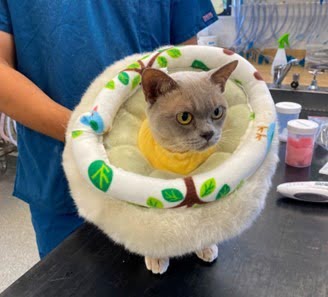
Lovely Ollie is a ‘frequent flyer’ at our clinic. One of Dr Pip’s regulars, the team at Turramurra are always over the moon to give him well-deserved cuddles! He is such a beautiful and special boy, we just had to celebrate by awarding him the Pet of the Month for July!
Staff Profile: Liam John – Deputy Nursing Manager

1. What inspired you to work with animals?
Working with animals has been a recent addition to my life. While I have grown up with dogs, and always enjoyed and thought animals were fascinating, my first career was down the route of Psychology. I have been vegan for the last 8 years, and spent that time learning about animal rights and watching documentaries that gradually inspired me to make a career change into a role I would be passionate about.
I went to TAFE and realised quite quickly I was more interested in the medical side of things, so completed my Certificate IV in Veterinary Nursing, and started working at Turramurra Vet Hospital soon after. I have found more intellectual stimulation and fulfillment in veterinary nursing than any other job I have had, and can see myself continuing in this field in the future.
2. Do you have any other qualifications and does this help in your current role at Turramurra Veterinary Hospital?
I have completed an Honours Degree in Psychology at Macquarie University which helps me understand our clients, and their needs. Treating everyone, including clients and patients, as equals is such an important aspect of this role.
I also completed a micro-course in wildlife handling from UTS. Wildlife are so diverse, and as they are not domesticated, there are complex differences in handling techniques and care.
3. What do you enjoy most about veterinary nursing?
I enjoy an active job, and this one definitely keeps me busy! I also find a lot of people are not sure what their job accomplishes, but with vet nursing you can see your efforts paid off right in front of you. There is a direct correlation between good nursing and good patient outcomes. Getting to know our clients and witness the trajectory of their pets’ lives is so rewarding.
Feline Friends: The Importance of Carrier Training your Cat
Author: Freya Britt-Lewis – Customer Care & Pet Health Care Writer
Often at Turramurra Veterinary Hospital we hear tales from clients about difficulty catching their cats prior to their appointments. Stories we hear most frequently tend to reiterate anxiety, aggression, or fear in their cats at the concept of being put in their cat carrier. Much like teaching a family dog to sit and stay, training your cat to travel calmly will do wonders for not only their anxiety levels, but yours too!
Carrier training will help to:
Decrease stress associated with veterinary visits
- Ensure your cat is more likely to be seen and treated for medical conditions early
- Ensure they are safely contained in case of an emergency
- Allow for easier travel to and from your home
- Decrease stress levels in your cat when boarding or hospitalised
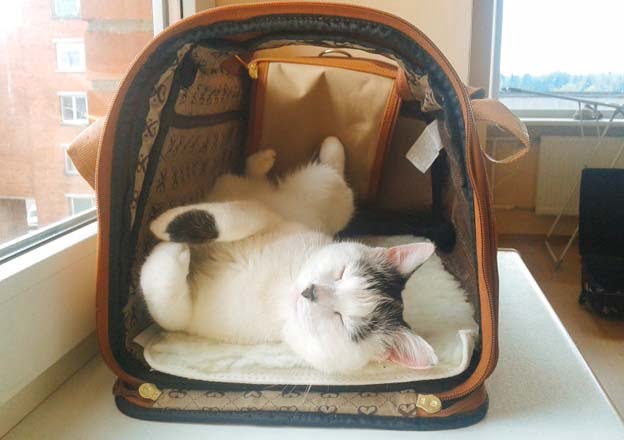
Training your cat to feel relaxed and comfortable in their carrier will be beneficial for many reasons, such as decreasing anxiety and ensuring comfort while traveling.
To start, it is important to find the right carrier for your cat. The carrier should be large enough for your cat to stand and turn around comfortably, with secure footing. Look for one with an opening at the top, this makes it easier to keep your cat comfortable during veterinary examinations. Line the carrier with a bath towel, newspaper, or absorbent pad in case of a toileting accident. Using a veterinary recommended pheromone spray such as Feliway, will aid in alleviating fear and stress your cat may have towards travelling in the carrier.
Patience and understanding are key when introducing your cat to its carrier.
Here are 10 top tips to help your cat have a positive association with the carrier:
- Make the carrier a part of your home environment. If it is out all the time, it will no longer be a strange object associated with a scary event (e.g. travelling in a car to the vet).
- Line the bottom of the carrier with soft bedding. If your carrier comes apart, start with the base section only. Place it in an area your cat frequently chooses to rest, such as a sun-soaked location or your own workspace.
- Leave treats in the carrier for your cat to discover on their own.
Click on the link to read the other 7 tips for carrier training your cat!
Innovations: Feliway – the Secret to Happy Cats
Author: Freya Britt-Lewis – Customer Care & Pet Health Care Writer
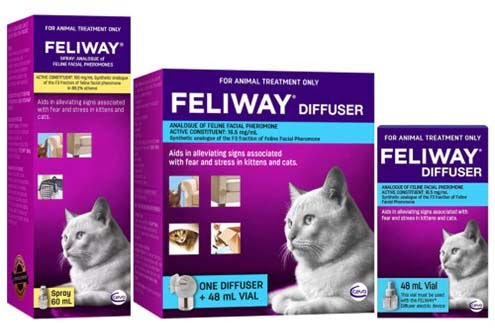
Do you find your cat often shows signs of stress, such as urine spraying, scratching, or hiding, in the home? Feliway is a clinically proven, veterinary recommended product that comforts and reassures your cat in order to reduce anxiety.
Feliway has been designed to mimic the natural pheromones of your cat. Cats naturally deposit pheromones from their cheek glands by rubbing their face on objects. By using a synthetic version, this replicates this natural scent and in turn makes your cat feel that they are in a safe and familiar environment.
Using Feliway Diffusers in your home helps stop unwanted scratching, urine marking, and reduces aggression towards other cats or pets in a radius of up to 70 meters. Using Feliway Spray can also prove helpful when traveling to and from the vet. Simply spray it in the carrier and on your cat’s bedding to decrease your cat’s anxiety.
Feliway comes in two easy formulas: a diffuser for prolonged and consistent usage in the home, and as a spray for when you are wanting a specific area targeted, or comfort when your cat is traveling.
If you have noticed your cat exhibiting any uncharacteristic signs in the home, book in a consultation with one of our veterinarians to discuss your cat’s behaviour and rule out a medical cause.
Ask the Vet!
Author: Dr Noni Marceau – Senior Veterinarian

1. I’ve noticed my dog is eating quite a bit of grass, is this normal?
Dogs may eat grass for a number of reasons, and to a degree, eating grass is normal. Going back to the days before domesticated dogs and formulated dog foods existed, wild dogs would have instinctively balanced their diet by ingesting prey (skin, fur, meat, guts and all!) as well as various plants/grasses. The stomach contents of their prey and grass intake provides fibre or roughage to the diet.
If your dog is eating MORE grass than normal, this could indicate a nutritional deficiency if your pet is not fed a commercially balanced diet, or more commonly may indicate nausea, or stomach/ intestinal discomfort. Veterinary assessment is indicated if your pet is eating more grass and is experiencing any combination of the following signs:
- Changed demeanour (e.g. lethargy, withdrawn, signs of pain)
- Vomiting
- Diarrhoea
- Loss of appetite
2. How can I tell if my cat is at a healthy weight?
Veterinarians use a well established grading system known as the Body Condition Score (BCS) to assess a pet’s weight during each visit. This helps to standardise the patient’s weight assessment for future monitoring while also determining whether a patient is above or below their optimal weight. The chart below provides a visual of this BCS:
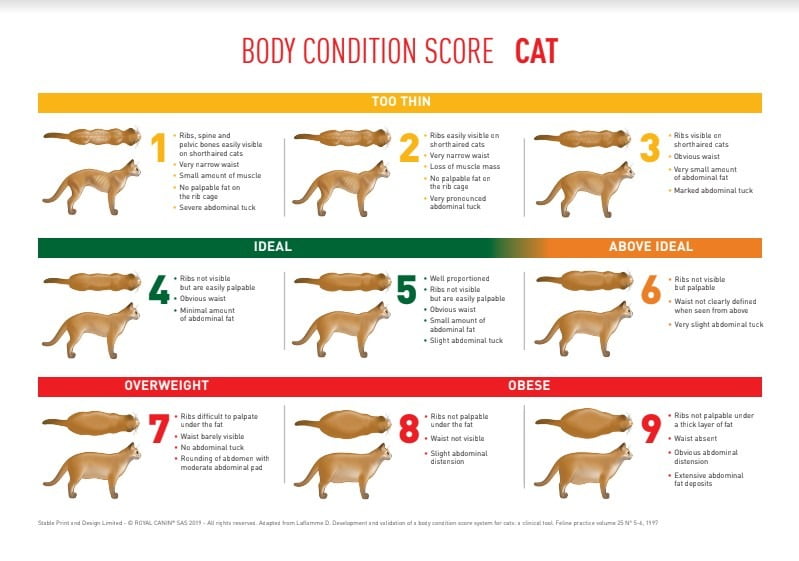
A cat of ideal weight will be graded a 4 to 5 out of 9. Their ribs will be easily palpable but not visible (run your fingers forward and backwards over your cat’s ribs to feel the bumps of the ribs under your fingertips, if it feels ‘squishy or padded’ here: your cat has too much subcutaneous fat and is overweight). Your cat should have an obvious waist line (hourglass shape when looking down at your cat from above when they are standing) as well as a minimal amount of abdominal fat palpable on their tummy (many cats will have an abdominal fat pouch that dangles down and wobbles side to side when they walk, even some healthy weighted cats). The tummy should have a slight abdominal tuck (the line of your cat’s undercarriage should tuck up slightly at the back when looking at your standing cat from the side).
Surprisingly the BCS is more helpful than the actual weight of the cat in determining if they are a healthy weight as there is so much variation in size between cats. We use the weight of the cat once the BCS is assessed to determine what percentage weight loss might be required and to calculate their goal weight. If you find that your cat is a little more cuddly than is recommended, do get in contact. Our veterinary team can help draw up a weight loss plan for your cat to achieve their optimal weight in a safe and effective way which will help them live their best life (reducing their risk of developing diabetes, heart disease and mobility problems).
3. My dog is struggling to get up after sleeping, and seems a bit stiff. What can I do to help?
Ensure your dog is a healthy weight. One of the most important points would be to ensure that your dog has an optimal body weight and is not carrying any excess fat, which can cause further strain on their joints.
Accurate diagnosis. The most common cause of stiffness and struggling to get up in elderly pets is osteoarthritis but younger dogs can develop arthritis too, particularly if they have hip or elbow dysplasia. However, there are other possible causes such as ruptured ligaments, bone fractures or even tumours, so it is important to start with a veterinary consultation. Imaging (such as x-rays) would be an important next step to diagnose and rule out other conditions to ensure that your dog’s treatment is optimised.
Treatment plan. Once we have a diagnosis, your vet can then provide appropriate treatment that is suited for your dog. We may recommend a reduction or even change in diet to ensure an optimal body condition score. Treatment may also often include regular anti-arthritis injections or anti-inflammatory prescription pain relief medications or other types of pain relief medication. We may also recommend essential fatty acids (at a dose rate optimised for joints) which have alot of clinical evidence to improve your pet’s arthritis due to their natural anti-inflammatory properties.
Exercise. Another key point to help reduce the symptoms of osteoarthritis would be to maintain your pet’s mobility by regular gentle exercise. It is also important to avoid high intensity and vigorous play as these could exacerbate soreness. Ensuring that your pet has a comfortable place to rest during the day is also important by having a warm, draft-free room, having non-slip flooring and a well-padded bed that is easy to step on and off. If you do find that your pet is starting to look a bit stiff, book in a veterinary consultation so that we can work together to ensure that your dog continues to live comfortably.
We hope you have enjoyed our newsletter and would love to hear from you! We are always happy to receive feedback from our clients, so feel free to send a message via email to manager@turramurravet.com.au as we always strive to improve our service.
Thank you! Warm Regards, your locally family-owned and independent Turramurra Veterinary Hospital team.

